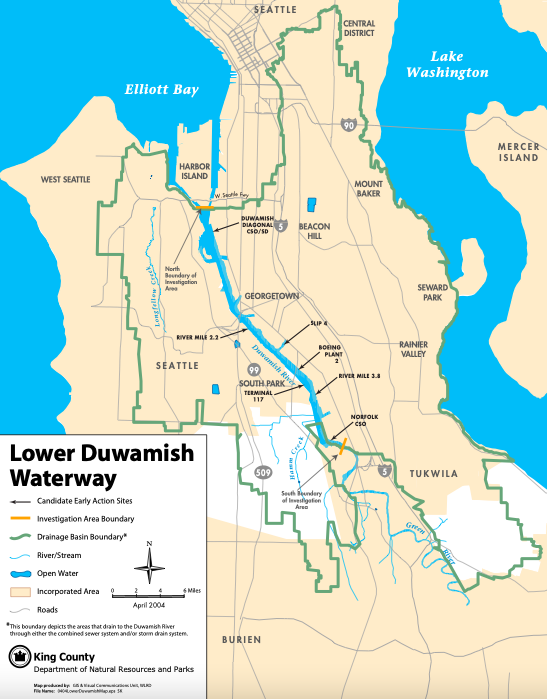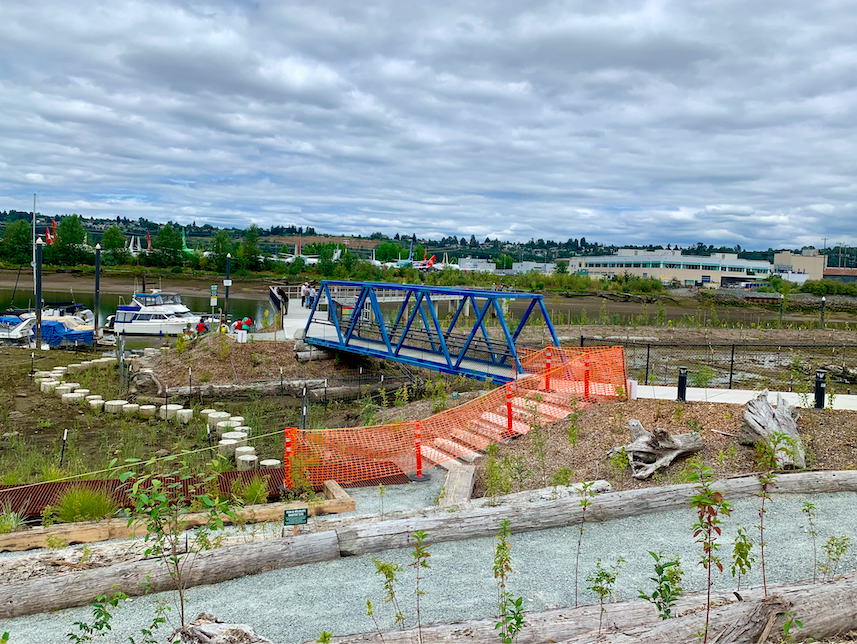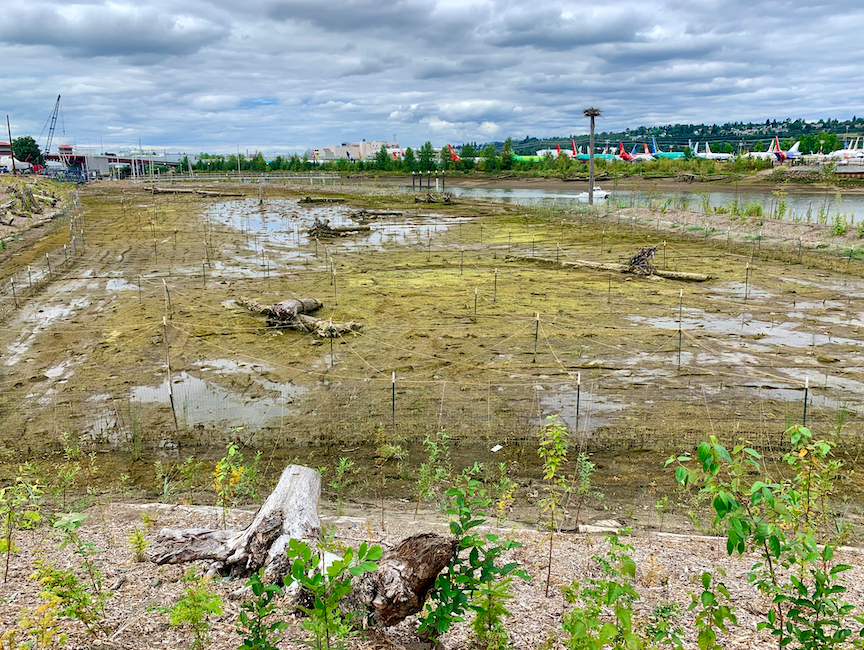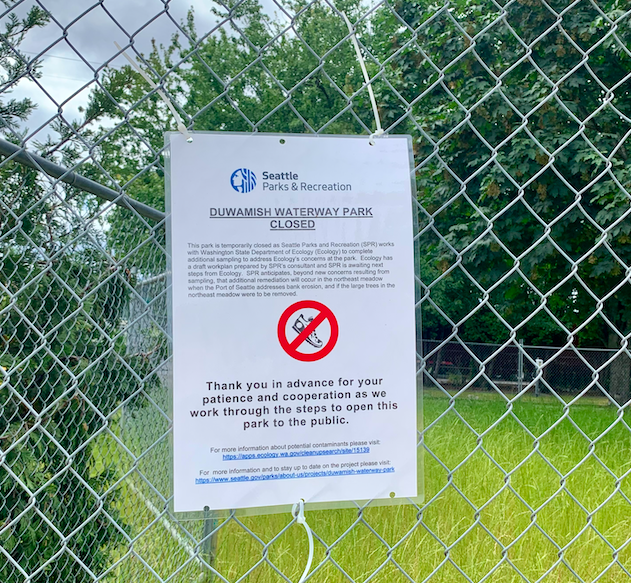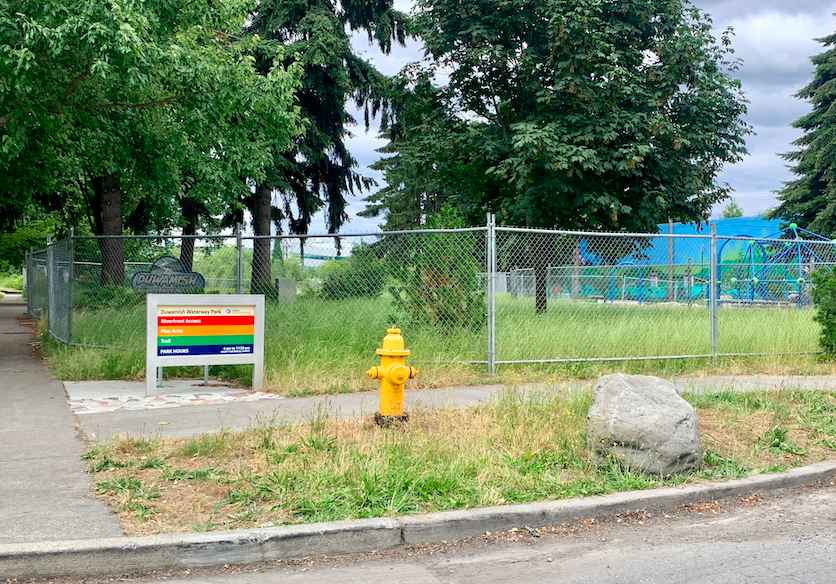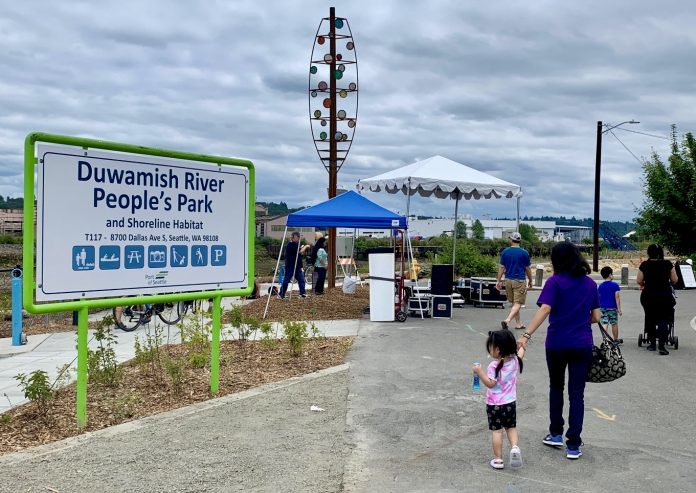
Officially listed as a Superfund site by the Environmental Protection Agency (EPA) in 2001, the Duwamish River continues to be one of the most toxic hazardous waste sites in the United States. For much of its length, the heavy imprint of industry has made the Duwamish unrecognizable as a river, much less as a critical regional ecosystem. At the time of its Superfund site designation, contamination from industrial waste extended into 412 acres of surrounding land — all of which will eventually need to be cleaned up to ensure the safety of people, animals, and ecosystems living nearby.
For a span of 14 acres, however, the recently opened Duwamish River People’s Park and Shoreline Habitat offers a glimpse of what a healthier future might look like for Seattle’s only river, which was dredged, re-channeled, and used an industrial dumping ground for the first century of Seattle’s civic history to support development of the city’s shipbuilding, shipping, and manufacturing industries.
Tucked away behind modest houses and a marina in South Park, the Duwamish River People’s Park, might appear unremarkable to visitors — at least at first glance. Most of park is actually shoreline habitat, an expanse of marshy brown earth sparsely dotted with plants. If lucky, visitors strolling down the pathway between public boat launch and observation point might spot an osprey encircling the nest topping a tall pole dredged into riverbed.
These fragile markers of biodiversity, however, are the result of years of work accomplished by Port of Seattle and Duwamish River Community Coalition (DRCC). This segment of the river and shoreline is the largest environmental restoration project to have been undertaken on the Duwamish river in a generation. Clean up has been completed to the highest standard, exceeding even the EPA’s orders, so that the fully area is open to the public and suitable as wildlife habitat.
“The park represents our vision for the river in general,” said Christian Poulsen, communication and policy analyst for DRCC, at the park’s grand opening event on July 16th. “It’s a symbol of the future.”
Poulsen, who grew up in South Park, is particularly enthusiastic about what the new park will mean for the community. “I live here and it’s one of the few green spaces we have in the neighborhood.”
Surrounded by industry, the census tracts that make up South Park are among the lowest income in Seattle and 74% identify as people of color. Life expectancy in South Park is 73.3 years as opposed to 82.3 years for Seattle as a whole, a disparity that may be at least partly explained by the fact that 92% of South Park is considered to be polluted or contaminated.
South Park also has less access to green space than many other Seattle neighborhoods, and the partial closure of the Duwamish Waterfront Park, one of South Park’s largest green spaces, has further restricted access. The park was closed after contamination was detected at the site, and fencing was put up around the open field and riverfront, leaving only the playground open to the public. According to Poulsen, the reopening of the park is years away.
However, even with setbacks like the closure of the Duwamish Waterway Park, progress has been made on removing the threat of pollution posed by the Superfund site. Poulsen explained that since efforts began in 2003 about half of the Superfund site has been cleaned up, with the work beginning in the south end of the river and moving north.
At the moment, clean-up attention has moved to the East Waterway and Harbor Island. Last March, the DRCC hosted a round table discussion dedicated to the topic, laying out the history around the project and informing the public of the current situation and future plans. Poulsen said that moving forward with this work depends on what funding comes through.
While, it’s clear that more restoration work needs to be accomplished on the Duwamish River, the new park and shoreline habitat offers space from which the Squamish and Muckleshoot tribes, which both have guaranteed fishing rights, can launch their boats out to the water. It also offers a healthier habitat for the salmon who travel down the river out to the ocean, where they provide food for endangered orcas. And for residents of South Park, the park provides a quiet place to watch the riparian ecosystem grow and heal.
Interested in exploring the Duwamish River People’s Park? Come to the Duwamish River Festival hosted at the park (8700 Dallas Avenue S, Seattle 98108) by DRCC on August 6th, 12-5pm. Food, games, prizes, and educational activities will be available.
Natalie Bicknell Argerious (she/her) is a reporter and podcast host at The Urbanist. She previously served as managing editor. A passionate urban explorer since childhood, she loves learning how to make cities more inclusive, vibrant, and environmentally resilient. You can often find her wandering around Seattle's Central District and Capitol Hill with her dogs and cat. Email her at natalie [at] theurbanist [dot] org.

